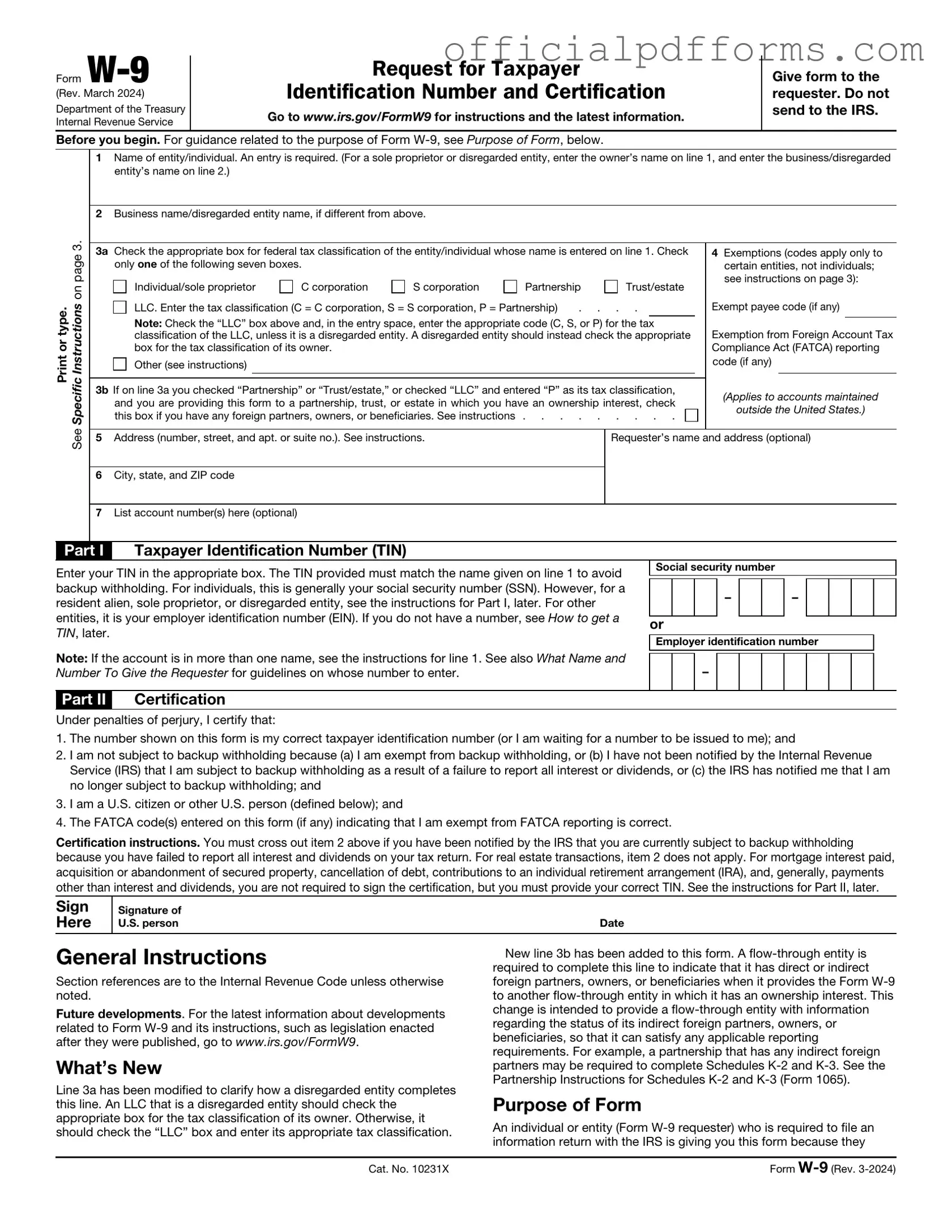The IRS W-9 form is used to provide your taxpayer identification information to another party, typically a business or individual who is required to report payments made to you. This form helps the requester accurately report income paid to you to the IRS. It is commonly used by freelancers, contractors, and vendors.
Individuals or entities that receive income from a business or other payers may need to fill out a W-9 form. This includes:
-
Freelancers and independent contractors
-
Real estate transactions
-
Corporations or partnerships receiving payments
-
Any individual or business that is required to report income to the IRS
To complete the W-9 form, follow these steps:
-
Provide your name as it appears on your tax return.
-
Enter your business name if applicable.
-
Select the appropriate tax classification (individual, corporation, etc.).
-
Fill in your address, including city, state, and ZIP code.
-
Provide your taxpayer identification number (Social Security Number or Employer Identification Number).
-
Sign and date the form to certify that the information is correct.
You should submit a W-9 form when requested by a business or individual that will be paying you. This is often done before any payments are made to ensure compliance with tax reporting requirements. It is advisable to submit the form as soon as possible to avoid delays in payment.
The information you provide on the W-9 form is used by the requester to prepare tax documents, such as the 1099 form, which reports income paid to you to the IRS. It is important to keep your information secure, as the W-9 contains sensitive personal data.
While you can technically refuse to fill out a W-9 form, doing so may have consequences. If you do not provide the requested information, the payer may withhold taxes from your payments at a higher rate. Additionally, they may refuse to work with you or delay payments. It is generally in your best interest to complete the form if requested.
